This week, Chris and Co are back from their holidays! So they're tackling their bulging mailbag of your questions. We discuss how scientists have been given the green light to cross human DNA with animal cells all in the name of medicine, eavesdroppers in your garden - the plants that respond to sound, and the world's smallest thermometer - only one molecule! We also tackle questions on keeping your beer cool on the beach, massive melons and the horticultural properties of wee. We find out about how radio shows can give Pygmies a voice and how anyone can have an out of body experience now that scientists have discovered how to trick your senses into making them happen. Plus, in Kitchen Science, Dave shows us how to make eerie music with a wine glass!
In this episode
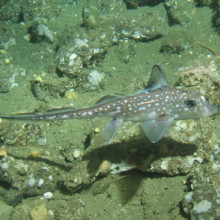
01:52 - Chimaeric human-animal hybrid embryos
Chimaeric human-animal hybrid embryos
On Wednesday 5th September, the UK's Human Fertilisation and Embryology Authority (HFEA) announced their decision that British scientists can press ahead with research to generate animal / human hybrid embryos, also known as embryo chimaeras. Certain sections of the media have got very overexcited about this type of research, drawing unhelpful cartoons of humans with rabbit heads and the like - but what exactly is this technology all about?
Put simply, creating chimaeric animal / human embryos means taking an unfertilised animal egg - such as from a cow or rabbit - and removing the DNA from it. Then the empty egg is fused with a human cell, and the process of development re-activated. The embryo is then allowed to grow for just a couple of days, until it is a tiny ball of cells.
At this stage, the scientists can extract embryonic stem cells from the developing embryo, which can be used to generate all the different tissues of the body. Many scientists believe that such embryonic stem cells could be the key to treating many human diseases - for example, using them to replace the brain cells lost or damaged in conditions such as Parkinson's or Alzheimer's.
Because the animal egg's DNA would be removed before the human cell is added, the resulting stem cells will be essentially human. However, there will be a small amount of animal DNA present. This is because egg cells have structures called mitochondria, which provide energy. These contain their own miniature chromosome in the form of a small circle of DNA, which controls how they behave. It too would be passed on in the stem cells. But any fears that rabbits with human heads will be hopping around the place are unfounded, because in any case the embryos would be destroyed at the stage when the stem cells are harvested, and not be implanted into the womb to develop further.
At the moment, human embryonic stem cells can only be created from human embryos, which are understandably in short supply. Many people also raise significant ethical objections to the use of human embryos in research. By using these hybrid embryos, scientists would totally avoid the need to use human eggs or embryos to generate stem cells. Although there are still people who have ethical objections to this technique, it is important to point out that such technology would effectively reduce the need for experiments on human embryos.
Many scientists and research organisations around the world believe that research using animal/human hybrid embryos is important - especially given the practical and ethical limitations of working with human embryos. If we truly believe that stem cells are a viable technology for treating serious human diseases in the future, then embracing hybrids may have to be a necessary step along the road of scientific progress.

05:33 - Are plants sensitive to sound?
Are plants sensitive to sound?
Korean researchers claim to have discovered two sound-sensitive genes in rice plants...
Mi-Jeong Jeong and colleagues from the National Institute of Agricultural Biotechnology in Suwon, South Korea, made the discovery by exposing plants to noise and studying how this affected gene activity.
Initially they tried playing 14 samples of classical music to their rice, including Beethoven's Moonlight Sonata, but saw no response.
Next they tried playing sounds of specific frequencies and began to see a change. At 125 Hz and 250 Hz the activity of two genes, rbcS and Ald, went up. But when sounds at at 50 Hz were played, the gene activity went down.
To find out whether other genes could be rendered sound-sensitive, the team linked the genetic elements that control the Ald gene to a 'reporter' gene inserted into the rice called GUS (beta-glucuronidase). They found that sounds could then also manipulate the levels of GUS.
This suggests that it might be possible to use sound instead of chemicals to control different genetic processes in plants, such as switching on resistance genes to help them fight off pests or ripen more rapidly.
Not all scientists are convinced though; some say that the new research, which is published in the journal Molecular Breeding, makes use of old techniques and lacks sufficient numbers to make the data credible. Sounds like sour grapes, although it does suggest that it's not just cereals like wheat and barley that have 'ears'...
Spiderman Suit Inches Closer
The dream of being Spiderman- or Spiderpig if you're a fan of the Simpsons - could be a step closer after the latest research by a group of Italian physicists.
Over the past couple of years scientists have started to understand how creatures like geckos and spiders can run effortlessly up walls. Their feet are covered with tiny hairs, and they stick to surfaces using the combined power of the weak atomic attraction between the atoms in their feet, and the atoms in the surface they're on, known as van der Waals forces.
Some researchers have tried to make adhesives based on this technology, such as Geckel - which was in the news recently. But researchers have been sceptical that these could ever support the weight of a human.
Professor Nicola Pugno, engineer and physicist at Polytechnic of Turin, Italy, has done some sums to show that a combination of carbon nanotube-based "Velcro", along with the van der Waals forces might be enough to support human, and make our Spiderman dreams come true.
This could potentially be used in many ways, from space exploration to sticky boots and gloves for window cleaners on skyscrapers. The technology could even be used underwater.
But before you get carried away with your Spidey-dreams, I have to tell you that the work isn't even at the prototype stage yet. And it may be that our human muscles simply aren't up to the task - unlike a gecko, we would suffer from terrible muscle fatigue if we tried to cling to a wall for hours.

11:39 - World's smallest thermometer - a single molecule
World's smallest thermometer - a single molecule
A green-glowing chemical from a jellyfish can be used as a molecular thermometer...
Known as GFP - green fluorescent protein - the substance is used by biologists to harmlessly label cells. Shining light of a certain wavelength at a cell containing GFP causes the molecule to flash up green.
But a closer look at the green light given out reveals that it is not continuous and instead rapidly blinks on and off as the molecule subtly alters its structure.
Now, Cecile Fradin and her colleagues from McMaster University in Hamilton, Ontario Canada, have found that the rate of blinking corresponds to the temperature - when things get hotter the blinking slows down, whilst at cooler temperatures the blinking speeds up.
To find out whether this could be used as a miniature optical thermometer the team measured the blink rate at different temperatures between 10 and 50 degrees C.
Writing in the Journal of the American Chemical Society, they found that with this technique they could make measurements to within an accuracy of 1 degree.
Previously, researchers had tried to use dyes which glow more brightly at different temperatures, but these can be misleading if several molecules congregate together producing a brighter light. The new discovery is likely to prove useful for temperature monitoring applications on miniature lab-on-a-chip diagnostic devices, and even for measuring the temperature of different structures inside living cells.

15:00 - Can contact lenses protect you form onion vapours?
Can contact lenses protect you form onion vapours?
Everyone's noticed this onion effect and people just think "oh, there's something in the onions", but what's interesting is, next time you're cutting onions, time how long it takes between cutting into the onion (and the spray you can see coming up under the knife) and the time it takes before your eyes start reacting...
You'll see there's a big delay between the onion being chopped up and you feeling the sting.
The reason is there's a chemical reaction going on the minute you start breaking into the onion, that starts to trigger the eye smarting effect. There are enzymes locked away in the onion called alliinases and they're names after the family you find them in, like onions, garlic, scully and chive.
They're the alium family, that's why it's called alliinase. This breaks down a family of chemicals, which are also in the cells called amino acid sulphoxides. They're the smelly things that make onion smell like onion.
As the enzyme starts chewing into them, it releases something called sulphenic acid and sulphenic acid then breaks down into another chemical which is called syn-Propanethial-S-oxide and that's the irritant.
It comes squirting out of the onion towards your eyes, binds to the cornea, which is very rich in nerve supply (it's got some of the densest nerve fibres in the body) which signal pain and this is an irritant.
These nerve fibres are wired up to your lacrimal gland, which makes tears, because your eye correctly says, if there's something irritating it there's probably a foreign body in the eye, therefore the way to get rid of it is to activate more tears and wash it out. That's why you cry.
But why does it take time before that kicks in? Because that chemical reaction has to happen!
Why does a contact lens make a difference? Well, a contact lens sits on the front of your eye, in front of the cornea, where there's the most nerves; it stops the chemical getting into contact with the nerves and instead, because contact lens wearers also probably make more tears as they've got a foreign body in their eye all the time, it's washing the stuff off the contact lens and down your tear duct before it has a chance to irritate the nerves at the front of the eye.
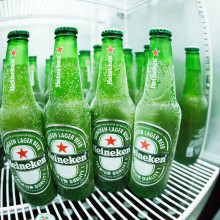
Why does a wet towel cool beer?
Dave: I think it probably is. When water turns from a liquid into a gas, it needs lots and lots of energy, that’s why if you sweat on a windy day you cool down because the water evaporated off your skin which absorbs lots of energy and cools you down. Essentially that is what the wet towel is doing. It’s evaporating so that absorbing lots of energy, cooling everything down. Ideally you wants it to by slightly windy, you probably don’t want too much sun on the outside as it will be heating it up. Unless, the sun heating it up is causing air currents, it’s making its own winds because it gets hot and air expands so it floats upwards.
Chris: I did try this when I was in Boston, It was so hot and I was in this room, and they said they would let me borrow a fan from reception for $5 so I took this fan up to my room. I then though all this is doing is blowing hot air from outside into my room, and making it hotter. So I thought I’d apply a bit of physics. I went and got a towel, dunked it in the sink, making it really wet and draped it over the fan. For a while it worked beautifully. The cold air coming through was evaporating water off of the towel, bringing down the temperature of the air going through and cooling my room down! That is until the fan blew up and filled the room with smoke because it had gotten water in it!
Why don't you notice sunburn until the next day?
What's happening when the sun is on your skins is that its causing damage in your skin. The Ultra Violet radiation on from the sun is zooming into your skin cells and causing the DNA in your cells to be damaged. This is prompting a lot of emergency reactions to go on in your skin cells. They realise they're damaged and lots of gene expression and signalling pathways get switched on in response to this damage to either patch up the cells that have been damaged by the sun or to kill themselves to protect your body from this damage. This actually takes some time to get going.
At the same time, because you've damaged your skin, there's going to be some kind of immune response going on as well, your body's activating itself to the damage so this is why you're going to go red, get inflammation, and in some really serious cases you'll get skin blistering and swelling but this does all take time. These are biological processes, the sensing of damage is quite quick but actually getting the response going might well take a couple of hours. It's best not to get sunburnt if you want to reduce your risk of skin cancer.
22:09 - Pygmy FM
Pygmy FM
with Scott Poynton, Tropical Forest Trust
Big businesses are notorious for being difficult to get through to, especially if you cannot read and write and the company happens to be cutting down the forest in which you live. Well, now technology has come to the rescue with what has been nicknamed Pygmy FM. Here is Mike Hopkin.
Michael Hopkin: For thousands of years, there have been Benjelle Pygmies who have lived a hunter gatherer lifestyle in heart of the northern Congo. Unfortunately for them, their home is slapped bang in the middle of one of the world's richest sources of prime hardwood and these semi-nomadic people are forced to share the forest with international logging companies. For years, the Benjelle have accepted logging as a fact of life without much means to air their grievances with CIB, the company that holds extensive logging rights in the Republic of Congo, the pygmies have been unable to tell the loggers which trees they would like to see left alone, but now with consumers demanding more sustainably harvested timber, CIB has realized that its profits are at stake. So, it has enlisted the help of development groups to set up a community radio station that aims to allow the Benjelle to speak up. I asked Scott Poynton of the Tropical Forest Trust, charity that promotes responsible forest management about the need to put the Benjelle on the air waves.
Scott Poynton: Part of the problem was the pygmy communities living in that area, well throughout central Africa really is that they are semi-nomadic. Today, they can be in one place and tomorrow they will be somewhere else. They are also non literate. You know, you cannot send them a letter. They do not have a letterbox that you can contact them through and also they are an egalitarian society so they do not have a village head. So, you cannot just go and talk to one person. So, it was actually Jerome Lewis's idea and Jerome and I been working with these pygmy communities for many years. Jerome had the idea of establishing a radio station, by which using, you know, robust wind up radio technology that we could have some broadcasts made by the communities themselves whereby they can communicate with the company and the company can create its own broadcast and thereby establishing a dialogue, not a direct dialogue, anyhow sort of two-way dialogue, but a dialogue nonetheless where ideas can be exchanged and the thoughts of the communities can be put on air and that can reach the company.
Michael Hopkin: The radio station at first perhaps inevitably nicknamed Pigmy FM has now been formally named "Bisso na Bisso," which means "between us" in the local Lingala language. A few pilot shows have already been made and in the traditional community radio style, feature mix of debate and music, but the pygmies still need a way to tell CIB exactly which trees they particularly value and this is where the project gets really clever. With the help of anthropologist Jerome Lewis of the London School of Economics, who has lived on and off with Benjelle for years, the project's organizers have created special handheld computer consoles for the pygmies to carry while roaming through the forest. The devices use GPS to log automatically the locations of important trees and sites. That way CIB, which has always practiced selective logging can avoid these precious specific resources.
Jerome Lewis: They put together a series of icons and have a decision tree whereby the pygmy communities can go into the forest and that is a very easy technology. It takes about five minutes to explain what it is all about and the pygmies are pretty smart people. They know what is going on. They have never seen a computer before, but they can work out what this technology is aiming to do and I have advised it because they can guide into the forest and say, 'look here is a sacred area so they can click on the icon that shows the sacred area and then they can click on the reason why it needs to be protected. It is a sacred area for the women or is it sacred area for traditional festivals, and in some cases they do not actually go down to that far because some of that knowledge is in fact confidential and sacred and they do not share, but in other cases they say 'look, here is an area we just need to protect it because we need to protect it' or 'here is an area where we gather food' or 'here is our watering hole' and so through that process they have been able to map large areas of forest that they use. These maps are then produced. They go to the company. They say, 'hey, look these are the areas we would really appreciate you to keep your bulldozers out of them, please do not fell these trees for example because in the dry season we harvest the caterpillars from those trees'. It is an important food product. And so what has happened is there is a dialogue being started through this handheld.
Michael Hopkin: The radio station will also benefit the pygmies in other ways. It will give them better access to information about doctor visits, vaccinations, and AIDS awareness.
Jerome Lewis: Everyone can make their own programs and put out their stories, their concerns and their music. We can make sure that information about the visits of the doctor are kind of getting out, because in the past for example the doctor would go out to make a vaccination program for the children, but half the children would be in the forest, you know, for one reason or another and so, there are issues like that but if we can sound radio, hey look, you know, at the second moon or whatever the doctor will be at this place, then the chances of helping these communities and the kids out there to get their vaccinations is going to be much stronger.
Michael Hopkin: The project's organizers have already started using the mapping technology in other neighbouring countries in the Congo basin, particularly the vast Democratic Republic of Congo to the East. It looks like the pygmies of the Congo are finally finding their voice. (Voice in Lingala language)
Chris Smith: It sounds like they are certainly on the right wavelength with that particular approach.
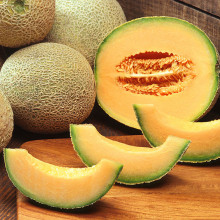
Why do melons keep cool in the sun?
There are a few things contributing to this...
Firstly, a melon is roughly spherical, and a sphere has a low surface area for it's volume. For the melon to heat up, the sun must shine on its surface, and so in this situation, there's not much surface compared to the volume of the melon.
Also, a melon contains a lot of water, which has a high 'specific heat'. This means that you need to put lots of energy in to raise the temperature just a little.
Even if the water does heat up, the flesh of the melon will not let the water move around inside, so the heat is not spread through, but needs to pass from one cell to the next.
It's also possible that the melon loses water by evaporation, which would also help to cool it down.

Why did my batteries overheat?
Batteries can heat up if you have a short circuit. Instead of the electricity going through a circuit where it is used up in various ways or resisted, it just goes straight through the battery, and is then conducted back around into the battery again. All of the energy from the battery is released as heat in the battery, and it can get dangerously hot.
How far can I drop an Ant before it dies?
We think that an ant is so small that it's terminal velocity, the fastest it will travel in free fall through air, doesn't actually get fast enough to kill it. So in theory, you could drop an ant from any height and it would still be okay.

Does urinating on plants help or hurt them?
Urine will contain lots of things that plants like such as water and nitrates, which can act like fertilizers. But if you wee in the same place too much, you will build up a concentration of salts in the soil, and this can affect osmosis of water into the plant's roots. Salts also accumulate in the plant's leaves, potentially causing leaves to drop off, which can compromise the plant...
34:45 - Science Update - Bad Diet Food and the Placebo effect
Science Update - Bad Diet Food and the Placebo effect
with Bob Hirshon & Susanne Bard, AAAS
Bob - This week for The Naked Scientists I'm going to talk about why diet foods might actually make kids fat. But first, Susanne's going to tell us why the placebo effect works on some people and not others.
Susanne - Some patients get powerful pain relief from a sugar pill if they're told it's real medicine. It's called the placebo effect, and scientists have long puzzled over what causes it, and why it helps some people more than others. Now University of Michigan neuroscientist Jon-Kar Zubieta and his colleagues have found that people who get the most pain relief from placebos also show increased activity in a tiny region of the brain called the nucleus accumbens.
Jon-Kar Zubieta (University of Michigan): So, basically, what this was telling us is that placebo activates dopamine and the magnitude of activation in this particular brain region predicted how well the placebo was going to work in these individuals.
Susanne - Zubieta doesn't know why some people have more dopamine activity in the nucleus accumbens, and therefore respond better to placebos, but he thinks genetics may play a role.
Bob - Thanks, Susanne. A new study suggests that popular diet foods could actually cause children to overeat and gain weight. A team of researchers at the University of Alberta found that when they fed juvenile rats low calorie foods that taste just like higher calorie versions, the rats began to overeat their normal diet. Sociologist David Pierce explains.
David Pierce (University of Alberta): In the young juvenile rat, their bodily system is in some sense fooled by the taste cue, such that the body thinks that it hasn't had any calories, so they ate more at their regular meal.
Bob - Pierce says that rats and humans have a similar response to taste conditioning, so children might be prone to overeat if exposed to diet foods when they're young. Instead, he suggests offering kids healthful, nutritious meals and leaving the low-calorie options on supermarket shelves.
Susanne - Thanks, Bob. Next time, we'll tell you about a computer with a sense of humour. Until then, I'm Susanne Bard...
Bob - ...and I'm Bob Hirshon, for AAAS, The Science Society. Back to you, Naked Scientists...
Can blood types cause problems with pregnancy?
This is called the rhesus effect. The rhesus gene adds an extra 'label' to the surface of your red blood cells, like the labels for group A or group B, this is type D. If you are rhesus negative as a mother, it means you will not have any antibodies to this label in your blood, as your immune system has never seen it. If your partner is rhesus positive there is a chance that a baby you conceive will be rhesus positive too.When the baby is born, blood from the baby can get into the mother's blood stream, and so the mother makes antibodies against the baby's blood. This wont harm the baby this time round, but may cause complications during the next pregancy.Mothers protect their baby from 30 weeks by putting a cross section of their antibodies into the baby's circulation. This will now include the "anti-D" antibodies, so if the baby is rhesus positive these antibodies will lock onto their blood cells and start to destroy them. This can mean the baby becomes anaemic inside the womb, and so you either need to induce birth quickly or give the baby a blood transfusion inside the uterus. To prevent this happening in the first place, rhesus negative women are given a dose of Anti-D antibodies, up to 72 hours after her first baby if they couldn't determine the baby's blood type. The anti-D antibodies soak up any of the baby's blood so that the mother's immune system doesn't know how to make these antibodies.
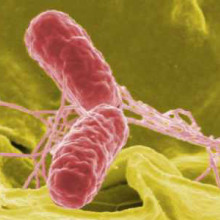
How do bacteria survive stomach acid?
Some bacteria are really tough. They have protective layers around them that enable them to survive acid. Some viruses actually need the acidic environment of your gut in order to infect you. Some bacteria, such as Clostridium perfringens, which causes gas gangrene, and Clostridium difficile (C.diff) form spores. These spores are tiny husks of dried up bacterium, almost in suspended animation, which can pass through the stomach without being damaged and they can come back to life in the relatively nice environment of the intestines.
Other bacteria, like Helicobacter pylori, which is linked to causing stomach ulcers and stomach cancer, encode an enzyme called urease. Urease breaks down urea which is found in low levels in all our tissues, into ammonia, which is alkaline and neutralises the acid around the bacteria.
What is non-ionising radiation?
Non-ionising radiation is not as dangerous as ionising radiation. Ionising radiation is the sort of radiation that we know does damage to cells like x-rays, gamma rays and beta rays which can cause damage to the DNA in your cells and cause cancer. Ionising radiation is so called because it produces ions by interacting with the atoms in your cells.Non-ionising radiation doesn't have enough energy to do this, so it doesn't damage your cells in the same way and is generally regarded as relatively safe. An example of non-ionising radiation is, in fact, visible light.
41:32 - Out of Body Experiences - On Demand!
Out of Body Experiences - On Demand!
with Henrik Ehrsson, Olaf Blanke & Thomas Metsinger, UCL
Meera - An Out of Body experience...An experience that typically involves a sensation of floating outside ones own body and, in some cases, seeing ones physical body from a place outside ones body.This is probably something you would normally only associate with stories from people who have just come off the operating table or enjoy their share of psychedelic drugs but now, for the first time, two scientific teams have been able to induce Out of Body Experiences, or OBE's as they are known, in healthy volunteers.But now, two teams led by Professor Olaf Blanke from Ecole Polytechnique in Switzerland, and Dr Henrik Ehrsson from UCL, have managed to create the eerie effect of an out of body experience in normal awake people - just with the aid of a virtual reality headset and a back rub! And they think the discovery might help, amongst other things, to train better surgeons.But how did they do it? Well, volunteers were rigged up with goggles containing miniature screens onto which the researchers could project images from a video camera. The camera was positioned behind the volunteers so that they could see themselves from behind on the screens in their goggles.The researchers then took a rod and rubbed the subjects on the back, which they could also see on the images from the camera.This fooled the subjects' brains into thinking that the projected images they were seeing on the screen was them outside of their own body, as Dr Henrik Ehrsson explained, when the discovery was announced recently at a meeting in London...Henrik Ehrsson: The idea is to manipulate, to change, the visual input or its relation to the tactile information. If we change it in the right way, we should be able to change the feeling of where yourself is located in space. We should be able to move it to a point outside your physical body. Even induce out of body experiences.Meera - Surely nobody would fall for this would they? I managed to speak to Olaf himself to find out what happened.Olaf Blanke: We tried to manipulate where you see being touched and where you fell being touched. We were interested in learning whether by doing such a procedure and later asking subjects where they really believed they were, whether we could displace them or make them insecure about where they really are. This is what we have hopefully accomplished, at least the first step, with this.People were filmed from the back, a camera was standing 2 metres behind them, and their back was stroken with large pen. This was filmed in the realtime and projected to a head-mounted display (goggles). So they would see their own bodies being stroked 2 metres in front of them. What then happens after a while is that you really start localising and feeling the touch, where you actually see it. So what this then suggested to us is that the partial phenomenon of an out-of-body experience can be reproduced in completely healthy subjects.Meera - I have to admit I'm quite upset that we didn't get to have a go on it today. I know you actually had a go yourself so can you explain how you actually felt when you had a go?Olaf Blanke: A lot of subjects thought it was kind of strange and weird. What I had was a really strange sensation that you feel the touch where you actually see the touch, although as a subject you know that this is absolutely not the case, you have partial insight into the experiment. Even as the person who set up the experiment I should be even more aware that this shouldn't work! But actually it does work, so I think it's a nice finding because it seems to be so automatic, based on brain mechanisms that you cannot control by higher mechanisms; language, memory, thought. Meera - I know that some of the application that have been discussed have been gaming which is an obvious one, but also you mentioned surgey? I don't really understand how that could happen.Olaf Blanke: It needs to be tested and I'm sure a lot of surgeons would be immediately hesitant to even try it but a lot of people who don't operate actually but who want to learn to operate; I think for them it could be interesting that they are somehow linked to the motor inputs and tactile inputs from the real surgeon. That might be much more actively perceived than just watching the operation.Meera - So, ambitious medics could soon feel the dexterity of their awesome supervisors...and forget about the new generation of motion sensitive consoles, soon you could fight monsters head on in the world of gaming! All by causing confusion between your senses. These studies looks like the beginning of a lot more research into this OBE's, tricking further volunteers into believing they're somewhere else. But self-consciousness is a principle pondered not only by scientists....but philosophers as well. I'll leave you with Thomas Metsingers insight...Thomas Metsinger: What we have created really is what philosophers call non-conceptual self-consciousness on a bodily level with only two sensory modalities. You just stand or sir there, but still you get this externalised self-location and this seems also to show that it is very old, very low level brain mechanisms that are responsible for our everyday experience of being an embodied self.
Is heart disease reversible?
Heart disease is when the arteries of the heart become blocked. If you have a heart attack then the arteries have become so blocked that some of your heart muscle becomes starved of blood and can die. At the moment we have no way to re-grow heart tissue, although muscle stem cells show promise.There are ways to clear the blockage and open up the arteries again. One way is to open the chest and perform a bypass operation, where a bit of vein from somewhere else in the body, usually the saphenous vein from the leg, is grafted on as a bridge to allow blood to flow around the blockage. The newer way to do this, and much less invasive, is to thread a line up through the femoral artery in the leg and into the heart. Using a scanner to see where you are, you put a wire inside the coronal artery and blow up a baloon which squashes the blockage out of the way. You can then prop the artery open using a metal cage called a stent. New stents are available which resease drugs to stop further blockage of the artery.
How close is the Apophis asteroid going to come to us?
The Apophis asteroid is due to fly past the earth in 2029, and there is some speculation that it could come back and collide with the Earth later. A company in Stevenage have announced that they would like to build a spacecraft to go and rendezvous with the asteroid to discover more about it. By flying up to meet the asteroid we can find out far more that we can from Earth, and if we find out early enough about it's projected course we have time to try and knock it out of the way! Should you build a shelter, probably not, but you've got 30 years in which to do it!
How is your lifespan determined?
There are a number of factors here, one of which is the size of the animal. Mice life, on average, about 6 weeks in the wild, though they can live up to 2 and a half years in ideal conditions. A human, however, can live well in excess of 80 years. There must, therefore, be a genetic element to this, as mice and men are separated by a small difference in genetics. Other factors such as lifestyle decisions affect your lifespan, but longevity does seem to run in families. If your family has large numbers of supercentenarians (people who are over 110) then you have a higher chance of living a long life. There's increasing evidence that your cellular metabolism also affects how you age.Tortoises can live much longer than you or I, but this is partly because they are cold blooded. This means they have a slower metabolic rate and use less energy.
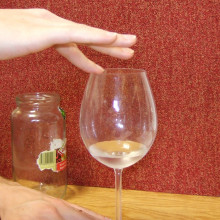










Comments
Add a comment